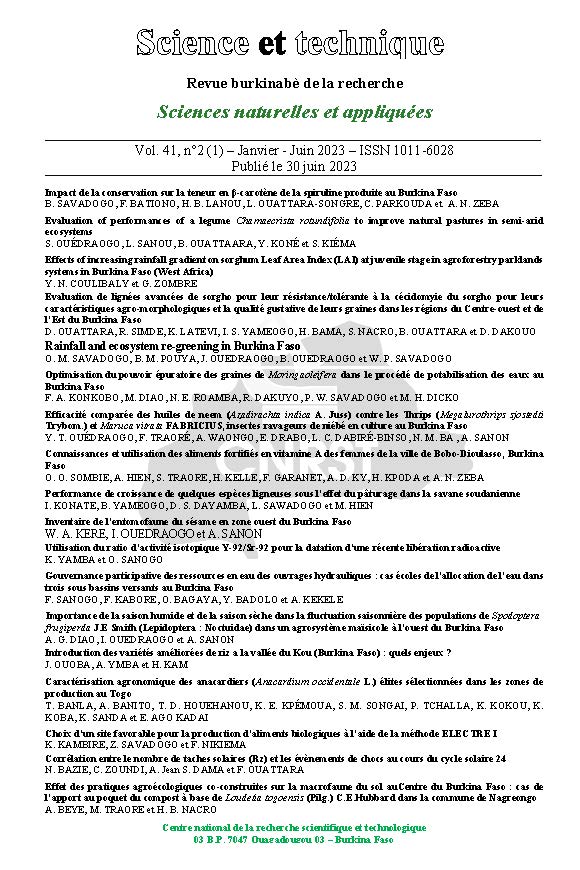Effect of co-constructed agroecological practices on soil macrofauna in central Burkina Faso: the case of Loudetia togoensis (Pilg.) C.E.Hubbard compost in the commune of Nagreongo.
Keywords:
Loudetia togoensis, soil macrofauna, compost, Burkina Faso, agroecologyAbstract
To compensate for the competition on crop residues limiting the production of organic manure, Loudetia togoensis (Pilg.) C.E.Hubbard, a herbaceous plant of low nutritional value and very poorly palatable by animals and available in the commune of Nagreongo was used for the production of compost. This study was conducted to evaluate the effect of this compost enriched Burkina phosphate on the dynamics of the soil macrofauna. Macrofauna was surveyed eight weeks after seeding about the TSBF method. It was found that macrofauna density, diversity index, equitability and functional groups were not significantly
influenced by the type of organic fertilizer, nor by the mode of application, nor by their interaction. However, the Loudetia compost permited to increase 190% in macrofauna density compared to 128% when organic manure was applied in a poquet. Termitidae (28%) and Formicidae (19%) were the most represented families with saprophages as the dominant functional group. Thus Loudetia togoensis can be a source of biomass for the production of organic manure that can positively affect the soil macrofauna through better colonization of macroinvertebrates

